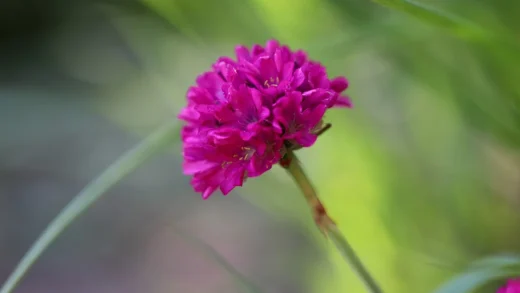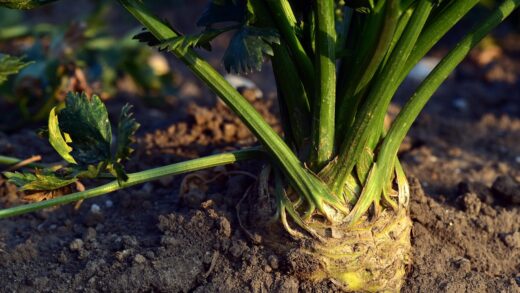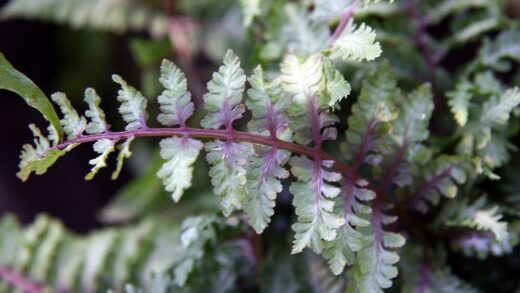Providing the right balance of nutrients is a key component in cultivating spiraea shrubs that are not only healthy and vigorous but also capable of producing the spectacular floral displays for which they are prized. While these plants are generally adaptable and can perform reasonably well in average garden soil, a targeted approach to fertilization can unlock their full potential. Nutrients are the essential building blocks for every plant process, from photosynthesis and foliage production to the development of strong roots and vibrant flowers. Understanding the specific nutritional needs of spiraea and how to meet them effectively is what elevates basic plant care to the level of expert horticulture. A well-nourished spiraea is better equipped to withstand environmental stresses, resist pests and diseases, and deliver a consistently beautiful performance in the landscape.
The philosophy behind fertilizing spiraea should be one of supplementation rather than substitution. The primary source of nutrition should always be a healthy, living soil rich in organic matter. Fertilizers are best used as a tool to address specific deficiencies or to provide a gentle boost at key moments in the plant’s growth cycle. Over-fertilization can be far more detrimental than under-fertilization, leading to weak, excessive growth, diminished flowering, and potential damage to the soil ecosystem. Therefore, a measured and informed approach is essential for long-term success.
This article will serve as a detailed guide to the nutrient requirements of spiraea and the best practices for fertilization. We will explore the roles of essential macronutrients and micronutrients, discuss the benefits of both organic and synthetic fertilizers, and outline the optimal timing for application to maximize benefits and minimize risks. The focus will be on creating a sustainable and balanced nutritional program that supports the plant’s natural rhythms. The knowledge presented here is designed to empower gardeners to make informed decisions that will result in healthier plants and more beautiful gardens.
Ultimately, feeding a spiraea is about fostering the health of the entire soil system in which it lives. A thriving soil food web, rich in beneficial microorganisms, will naturally make nutrients more available to the plant’s roots. By combining the use of organic matter with judicious applications of fertilizer when needed, a gardener can create a self-sustaining system that promotes robust plant health. This holistic approach ensures that the spiraea receives the balanced diet it needs to flourish for many seasons to come.
Understanding essential nutrients
To effectively fertilize spiraea, it is important to have a basic understanding of the key nutrients plants require for healthy growth. These are categorized into macronutrients, which are needed in larger quantities, and micronutrients, which are required in smaller amounts but are no less important. The three primary macronutrients, often displayed as the N-P-K ratio on fertilizer packaging, are Nitrogen (N), Phosphorus (P), and Potassium (K). Each plays a distinct and critical role in the plant’s life.
More articles on this topic
Nitrogen is arguably the most recognized nutrient, as it is directly responsible for vegetative growth, including the development of leaves and stems. It is a vital component of chlorophyll, the pigment that allows plants to photosynthesize and create their own food. A spiraea with adequate nitrogen will exhibit lush, green foliage and vigorous growth. However, an excess of nitrogen can be problematic, stimulating rapid, weak growth at the expense of flower production and making the plant more susceptible to pests like aphids.
Phosphorus plays a crucial role in energy transfer, root development, and the processes of flowering and fruiting. For spiraea, an adequate supply of phosphorus is essential for establishing a strong root system, particularly in young plants, and for promoting the abundant formation of flower buds. A deficiency in phosphorus can lead to stunted growth, a purplish tint on the leaves, and significantly reduced flowering. It is a key nutrient for ensuring a spectacular bloom display.
Potassium is vital for the overall health and vigor of the plant. It helps to regulate many physiological processes, including water movement within the plant, and it plays a key role in strengthening cell walls. This strengthening effect makes the plant more resilient to environmental stresses such as drought, temperature extremes, and disease. A spiraea with sufficient potassium will be more robust, with sturdy stems and a greater ability to withstand adverse conditions, contributing to its overall longevity and hardiness in the garden.
Organic versus synthetic fertilizers
When choosing how to supply nutrients to a spiraea, gardeners have two main options: organic fertilizers and synthetic fertilizers. Organic fertilizers are derived from natural sources, such as compost, well-rotted animal manure, bone meal, blood meal, and fish emulsion. These materials not only provide a slow and steady release of nutrients as they are broken down by soil microorganisms, but they also contribute to improving the overall health of the soil. They add organic matter, which enhances soil structure, increases water retention, and fosters a diverse and beneficial microbial population.
More articles on this topic
The slow-release nature of organic fertilizers is a significant advantage, as it reduces the risk of burning the plant’s roots and provides a sustained source of nutrition over a long period. This mimics the natural nutrient cycling found in a forest ecosystem. Using compost as a top dressing each spring is an excellent way to provide a balanced diet of macro- and micronutrients while continuously improving the soil. For spiraea, this holistic approach is often all that is needed to maintain excellent health and vigor, particularly in a well-prepared garden bed.
Synthetic fertilizers, on the other hand, are manufactured chemical products that offer a more concentrated and readily available source of specific nutrients. They can be very effective at correcting a known nutrient deficiency quickly and are often formulated with a precise N-P-K ratio, allowing for a highly targeted application. For example, if a soil test reveals a severe phosphorus deficiency, a synthetic fertilizer high in phosphorus can provide a rapid solution to boost flower production. They are available in various forms, including granular, water-soluble, and slow-release pellets.
While synthetic fertilizers have their place, their use should be approached with caution. Because the nutrients are immediately available, it is easy to over-apply them, which can lead to root burn, nutrient imbalances, and potential environmental runoff. Furthermore, synthetic fertilizers do not contribute to the long-term health of the soil; they feed the plant directly but do nothing to improve soil structure or support microbial life. A balanced approach often involves building a foundation of healthy soil with organic matter and using synthetic fertilizers sparingly, if at all, as a supplemental tool for specific situations.
Best practices for fertilizer application
The optimal time to fertilize spiraea is in the early spring, just as the new growth begins to emerge. This timing ensures that the nutrients are available to the plant at the start of its most active growth period, supporting the development of healthy foliage and the formation of flower buds. A single application in the spring is typically sufficient for the entire growing season. Avoid fertilizing in late summer or autumn, as this can encourage a flush of tender new growth that will not have time to harden off before winter, making it vulnerable to frost damage.
When using a granular fertilizer, whether organic or synthetic, it is important to apply it correctly to prevent damage to the plant. The fertilizer should be sprinkled evenly over the soil surface around the base of the shrub, extending from near the crown out to the dripline (the furthest reach of the branches). Avoid piling the fertilizer directly against the main stems, as this can cause them to rot. After applying the granules, it is helpful to gently scratch them into the top inch of soil with a cultivator or your hands to ensure good contact with the soil.
After application, the fertilizer must be watered in thoroughly. This serves two important purposes: it helps to move the nutrients down into the root zone where they can be absorbed by the plant, and it dissolves the fertilizer granules, preventing them from burning the plant’s crown or any shallow roots. A deep and slow watering is most effective. This step is crucial for both the safety and the effectiveness of the fertilizer application.
For liquid or water-soluble fertilizers, the product is mixed with water according to the package directions and then applied to the soil around the plant. This method provides nutrients in a form that is immediately available to the roots and is a good option for giving a plant a quick boost. However, because the nutrients are so readily available, the effects are often shorter-lived than those of granular products. Regardless of the type of fertilizer used, it is always essential to read and follow the manufacturer’s instructions carefully to avoid over-application.
The importance of soil testing
For gardeners who want to take a more precise and scientific approach to fertilizing their spiraea, conducting a soil test is an invaluable first step. A soil test provides a detailed analysis of the soil’s current condition, including its pH level and the availability of essential nutrients like phosphorus, potassium, and magnesium. This information moves the gardener from guessing what their plants need to knowing exactly what is lacking or what is present in excess. Home test kits are available, but for the most accurate results, sending a soil sample to a local university extension service or a private lab is the best option.
The pH of the soil is a critical piece of information provided by a soil test. Soil pH affects the availability of nutrients to the plant’s roots. Even if a nutrient is present in the soil, it may be “locked up” and unavailable to the plant if the pH is too high or too low. Spiraea generally thrive in a soil pH between 6.0 and 7.0. If the test reveals a pH outside of this range, it will also provide recommendations for how to amend it, such as adding lime to raise the pH or sulfur to lower it. Adjusting the pH is often the most important step in correcting nutrient issues.
The nutrient analysis portion of the soil test report will indicate the levels of key macronutrients. This allows for a much more targeted fertilization strategy. For example, if the report shows that phosphorus levels are very high, you would know to avoid fertilizers with a high middle number (P) and could choose a product that supplies only nitrogen and potassium if needed. This prevents the unnecessary buildup of nutrients in the soil, which can be harmful to the environment and the plant.
By using the results of a soil test, a gardener can create a custom fertilization plan tailored to the specific needs of their spiraea and their garden’s soil. This data-driven approach is the most efficient, cost-effective, and environmentally responsible way to manage plant nutrition. It ensures that you are providing exactly what your spiraea needs to thrive, without the waste and potential harm that can come from indiscriminate fertilizer applications. It is a fundamental practice of sustainable and expert-level gardening.
Recognizing nutrient deficiency symptoms
Learning to visually identify the signs of nutrient deficiencies in a spiraea can provide valuable clues about its health and needs. While a soil test is the only way to be certain, the plant’s leaves often serve as a diagnostic tool. One of the most common symptoms is chlorosis, which is a general yellowing of the leaves. The specific pattern of yellowing can help to pinpoint the deficient nutrient. For example, a nitrogen deficiency typically appears as a uniform yellowing of the older, lower leaves first, as the plant moves this mobile nutrient to support new growth.
A deficiency in iron, a crucial micronutrient, also presents as chlorosis, but with a distinct pattern known as interveinal chlorosis. In this case, the leaf tissue turns yellow, but the veins remain green. This symptom usually appears on the newest, youngest leaves first and is often caused not by a lack of iron in the soil, but by a high soil pH that makes the iron unavailable to the plant. This is a classic example of how soil pH directly impacts nutrient uptake and plant health.
Phosphorus deficiency, while less common in established shrubs, can manifest as stunted growth and an unusual dark green or purplish discoloration of the leaves, particularly on older foliage. Since phosphorus is vital for energy transfer and flowering, a deficient plant will also exhibit poor vigor and a significant reduction in the quantity and quality of its blooms. These symptoms serve as a clear signal that the plant is lacking a key component for its fundamental metabolic processes.
It is important to remember that symptoms like yellowing leaves or stunted growth can also be caused by other factors, such as improper watering, soil compaction, or disease. Therefore, it is essential to consider the overall growing conditions before concluding that a nutrient deficiency is the sole cause. However, when combined with knowledge of the soil and recent care practices, these visual cues can be an excellent starting point for diagnosing and addressing the nutritional needs of a spiraea, helping to restore it to full health and beauty.


















